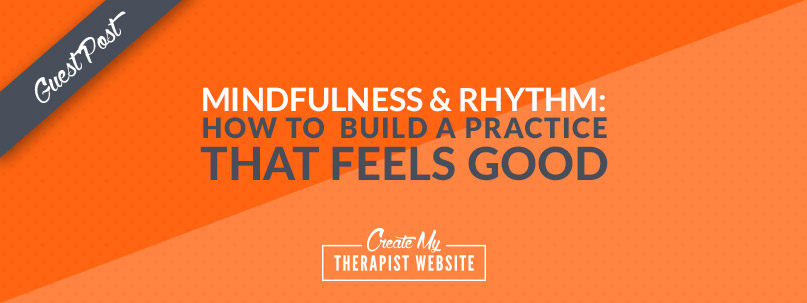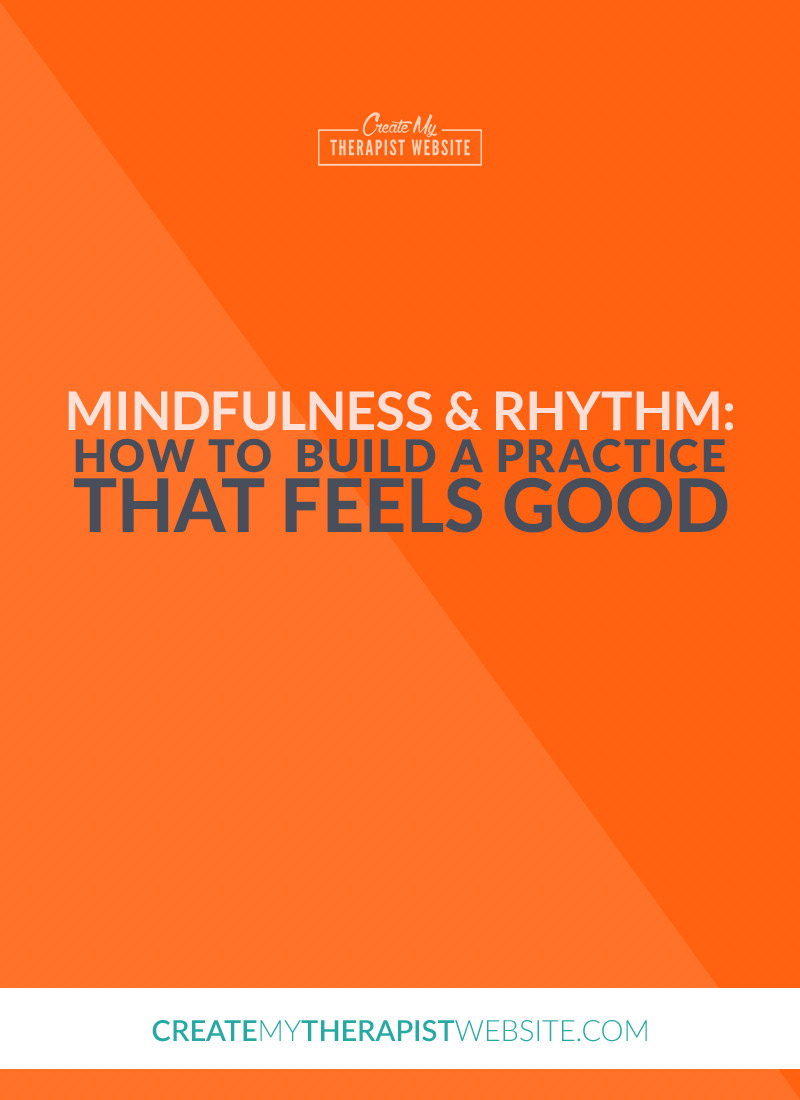Rhythm is a pivotal part of our bodies, our relationships and our lives.
Rhythm is more than a drum beat, more than a conversation – it’s in the way we walk, talk, breathe, interact, push ourselves, and soften into stillness.
In many ways, therapy is about rhythm – helping people regulate, helping them communicate, and helping them slow down meaningfully.
Private practice can keep you in your head a lot of the time – figuring out technology, putting systems in place, blogging, networking, tracking client numbers and income, and much more.
All of this is important. All of this matters.
But so does rhythm.
Rhythm is in the packed client days, and the empty hours to fill. It’s in the days when you do too much, and the days when you get mad at yourself for not doing enough.
Internal vs. external rhythms
Tuning into rhythm is a way to come back into your body, to re-inhabit your breath, to ground into yourself a creative being.
As rhythmic beings, we are constantly being influenced by both internal and external rhythms.
Internal rhythms are those that originate within ourselves and affect how we show up in the world. These include: breathing, walking, talking, energy levels, our thoughts and so many more.
External rhythms are those that originate from outside ourselves and affect our internal state and rhythms. These can include: other people’s energy levels, seasonal shifts, the news cycle, collective stress/trauma and much more.
Take a moment and notice one internal rhythm and one external rhythm that’s present in your life, right now.
Try to notice without judging or criticizing. Rhythm is information.
Do your internal rhythms tend to be slow, medium, or fast? Do the external rhythms that surround you (including clients!) tend to be slow, medium, or fast?
Take this opportunity to get curious about the rhythms that both surround you and are expressed through you.
Rhythm and self-care
You may already have self-care practices in place that connect you to rhythm. Yoga, meditation, exercise, art-making and so many more can connect us to rhythmic flow, to a give and take energy.
These (and other) self-care practices are an important way to come back to yourself and back to your own rhythms.
Remember that connecting to rhythm through self-care can also look like going out with friends, a group hike or other collective experiences.
Find what self-care practices work for you – remember that rhythm can be both an exuberant and subtle experience, so your self-care practices can mirror that range.
Tuning into your practice, right now
It can be easy (too easy some days!) to just power through without slowing down. My personal experiences and my work with helpers & healers has taught me how deeply helping, hustling and doing are ingrained in many of us.
There’s nothing wrong with any of those qualities.
But I bet there’s some part of you that wants to feel a different way. To find the sweet spot in between hustling/pushing and checked out/burned out.
Either you’d like to feel that building your practice could be just a teensy-bit less hard, or that you’re finally where you’d like to be practice-wise, but you’re feeling a little tapped out.
In order to shift anything, tuning it has to come first.
A quick mindfulness exercise
So, pause. Take a moment to tune into your breath, your body, and your thoughts.
Notice anything there may be to notice, with as much gentleness as possible.
Now turn your attention to your practice. Notice how your body feels and if anything has shifted.
The rhythm of your practice
Ask yourself – what’s the rhythm of my practice? Of my days?
You might tap out a gentle rhythm, tune into a body sensation, or think of a color or image.
Notice anything that may have come up – in thoughts or in physical sensation – when you get curious about your practice in this way.
The rhythm of your ideal practice
Now, tune into the rhythm of your ideal practice.
Notice if that pragmatic voice comes up inside with protests over how many more clients you need, or how you’ll pay this month’s office rent, or some other practical concern.
Kindly ask that voice to step aside for a moment (while still honoring that it showed up).
How would you like your practice to feel, rhythmically?
Lean into how it would feel in your body, in your breath, in your schedule.
Think of a song or piece of music that expresses the way you’d like your practice to feel.
There’s really no right or wrong – you might think of a song that helps you feel energized, one that connects you to a specific memory, one that relaxes you.
Allow your choice to “bubble up” spontaneously, rather than being a purely cognitive exercise.
Take time to listen to it – feel the rhythm of the song in your body, let it sink down to your bones. Invite your body and breath to shift into a different way of being. Songs can be powerful touchstones, so revisit it often. Let it be a reminder that reconnects you to the rhythm of your ideal practice.
Conclusion
Mindfulness and rhythm go hand in hand with private practice – and life.
When we can drop in the present moment and notice what is, while also holding/embodying the rhythm of how we would like things to feel, we give ourselves permission to build our practices in a way that feels nurturing and satisfying.
Ultimately, this allows us to serve our clients – and ourselves – so much better.
Maya Benattar, MA, MT-BC, LCAT is a music therapist and psychotherapist in private practice in Midtown Manhattan (NYC). In addition to her clinical work, Maya offers online and in-person Reclaim Your Rhythm workshops for helpers and healers and individual Reclaim Your Rhythm consultations. She loves supporting helpers and healers in showing up for their clients – and themselves – in bold and clear ways.
For more information about Maya and her work, visit www.mayabenattar.com/professionals/
You can also find her on Instagram and Facebook.
{Instagram}: www.instagram.com/mayabenattar
{Facebook}: www.facebook.com/mayabenattarlcat
[av_sidebar widget_area=’Blog Post Resource Library Opt In’ av_uid=’av-2gvwy6′]




